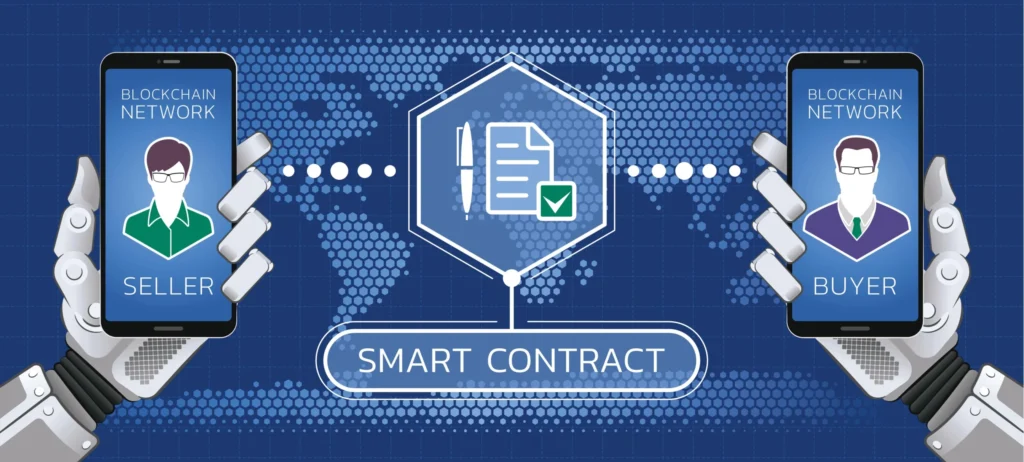Smart Contracts Made Simple: What They Are and Why They Matter
Introduction: The Rise of Trustless Agreements
As blockchain technology continues to reshape industries, the term “smart contracts” has moved from niche developer forums into mainstream conversations. If you’ve heard the phrase but aren’t quite sure what it means, you’re not alone. For beginners, smart contracts can sound like either an innovation in legal agreements or a piece of complex computer code. In reality, they’re both—and neither.
Smart contracts for beginners are best thought of as automated programs that run on a blockchain, designed to execute actions when certain conditions are met. They don’t require lawyers, middlemen, or oversight. Instead, they rely on logic and transparency to perform tasks reliably and independently.
What Is a Smart Contract?
A smart contract is a self-executing code stored on a blockchain. It performs actions when predetermined rules are satisfied. For example, it can transfer cryptocurrency from one wallet to another once a buyer confirms receipt of goods.
Unlike traditional contracts that require trust between parties or legal enforcement, smart contracts operate on the “code is law” principle: once deployed, the contract follows its programmed rules exactly and automatically.
Why Smart Contracts Matter
Smart contracts have far-reaching implications across sectors. Here’s why they matter:
- Automation: They eliminate the need for intermediaries in many processes, saving time and cost.
- Transparency: Once deployed, the code is visible on the blockchain. Anyone can audit it.
- Security: The decentralized nature of blockchain makes tampering with contract code difficult.
- Trust: Since execution is governed by logic, not human judgment, outcomes are consistent and predictable.
These advantages make smart contracts valuable for financial services, insurance, logistics, digital art (NFTs), and even voting systems.
Real-World Use Cases
Let’s explore how smart contracts are used today:
- DeFi (Decentralized Finance): Protocols like Uniswap or Compound use smart contracts to allow users to trade, lend, or borrow without a centralized authority.
- NFT Marketplaces: Platforms like OpenSea use them to automate the minting and sale of digital collectibles.
- Supply Chain: Smart contracts help track goods as they move through the supply chain, automatically releasing payments when milestones are verified.
- Insurance: Claims can be paid automatically once pre-set conditions (such as weather data) are met.
How Smart Contracts Work: A Simple Breakdown

Credit from Bitpanda
Here’s a simplified process of how smart contracts operate:
- A developer writes the contract in a blockchain-compatible language (usually Solidity).
- The contract is deployed to a blockchain network.
- The contract remains publicly accessible but immutable.
- When someone interacts with the contract (e.g., by making a payment or calling a function), it checks whether the conditions are met.
- If so, it executes the corresponding outcome—automatically and irreversibly.
This removes human error, bias, or delay in enforcement.
Getting Started: Tools You Need
If you’re new and want to build or interact with smart contracts, you’ll need a basic toolkit. Here’s an overview of the common components:
| Component | Purpose | Examples |
|---|---|---|
| Writing contracts | Create the contract logic | Solidity |
| Local development | Simulate contract behavior on your machine | Hardhat, Truffle |
| Frontend integration | Connect contract to a website or app | Web3.js, Ethers.js |
| Wallet & testnet access | Test transactions without using real funds | MetaMask + test ETH |
| Live deployment | Launch your contract on a public blockchain | Ethereum, Arbitrum, Optimism |
Each tool plays a role in moving from idea to fully functioning decentralized application.
A Beginner-Friendly Example
Imagine Alice wants to sell a digital artwork to Bob. Rather than relying on an online marketplace, she creates a smart contract that holds the artwork and waits for payment. When Bob sends the agreed amount of ETH to the contract, it automatically transfers ownership of the artwork to him.
No platform fees. No chance of Bob paying and not receiving the item. No waiting for human approval.
It’s a transaction handled by logic, not trust.
Common Misconceptions
- “They’re legally binding like traditional contracts.”
Not necessarily. Smart contracts are code, not legal documents—unless accompanied by legal frameworks. - “Once deployed, they can be edited anytime.”
False. Most are immutable once on the blockchain. Developers need to be precise. - “Only coders can use smart contracts.”
While writing them requires technical skills, many apps today let users interact with smart contracts without writing any code at all.
Are Smart Contracts Safe?

Credit from 101 Blockchains
Yes—and no. While the blockchain itself is highly secure, the contract code is only as good as the developer who wrote it. Bugs or logic flaws can lead to vulnerabilities. In 2016, a famous example—the DAO hack—saw millions in ETH stolen due to an exploit in a smart contract.
Today, audits by third-party security firms and tools like formal verification help reduce risks, but no system is foolproof.
What to Know Before You Start
If you’re interested in creating smart contracts, here are a few important tips:
- Start with testnets. Don’t deploy to the main blockchain until you’re sure your contract behaves correctly.
- Use version control and testing frameworks. Hardhat and Truffle are designed for this.
- Read other people’s code. Many open-source contracts are available on platforms like Etherscan or GitHub.
- Understand gas fees. Running smart contracts costs gas—paid in ETH. Optimize your code to minimize it.
Conclusion: Why Smart Contracts Deserve Your Attention

Credit from Computer Resources of America
Smart contracts for beginners may seem daunting at first, but they’re simply tools—programmable agreements—that open doors to new ways of doing business, building apps, and creating value online. Whether you’re looking to automate tasks, develop blockchain apps, or understand the future of finance, learning how smart contracts work is a critical first step.
They’re not science fiction. They’re already powering real systems—and they’re only getting smarter.




